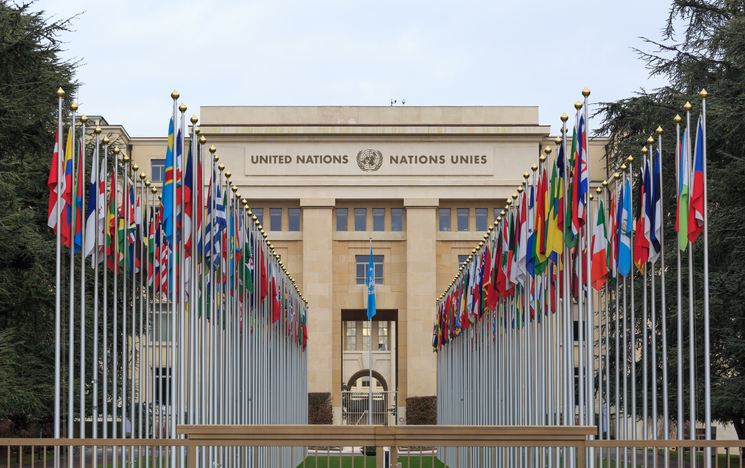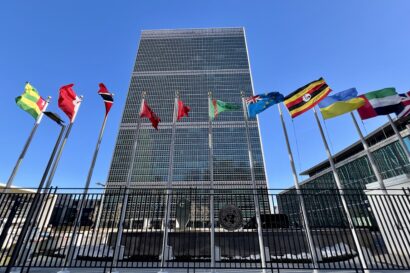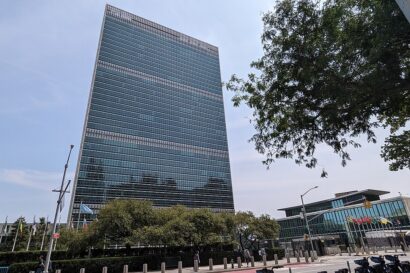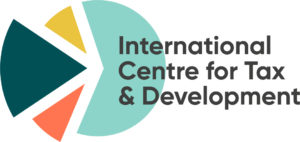After attending the United Nations Tax Committee meeting in October and participating in its deliberations, Professor Sol Picciotto reflects in his latest blog contribution on the history of the Committee and its role in international tax.
The meeting of the UN Committee of Experts in International Tax held in Geneva from 17 till 20 October 2023, took place at a time of historic developments in the international tax world. The previous week had seen the tabling at the UN, by Nigeria on behalf of the African group, of a resolution calling for the negotiation of a UN convention on international tax cooperation. This was subsequently approved by the General Assembly’s Second Committee, opening up new possibilities for international tax governance.
The same day was also marked by the publication, by the Organisation for Economic Cooperation and Development (OECD), of the full text of the multilateral convention (MLC) to address the tax challenges of globalisation and digitalisation, a key part of the two-pillar package negotiated through the OECD/G20 Inclusive Framework on BEPS (base erosion and profit shifting). However, the MLC remains stalled, and reports indicate continuing disagreements and political reservations, and above all serious doubts over the likelihood of US ratification, which is essential for the convention’s adoption.
The transition to a possible new global framework through the UN will take some time, but in the meantime the UN Committee has become increasingly active.
New Energy in the UN Committee
The October sessions of the UN Committee were crammed with discussions of detailed technical tax matters. There was little mention of the wider global developments, yet the meeting provided a fascinating counterpoint to them, particularly for those of us who have long supported and followed the Committee’s work. The current Committee is tackling an ambitious agenda with energy, efficiency, and determination, particularly among its members from low- and middle-income countries. This is in sharp contrast to its previous history, when it was almost entirely concerned with tax treaty issues and beset by continuing conflict about whether, and how far, the UN model should align with that of the OECD.
Now, halfway through the 4-year term of the current membership which runs to 2025, the Committee is well on the way to delivering reports covering a wide range of issues, including wealth and solidarity taxes, environmental taxation, indirect taxes, health taxes, and improvement of tax administration (including through digitalisation). This list adds to other important issues which fall within the Committee’s more accustomed areas of international tax, such as further refinement of transfer pricing guidance and updates to the UN model convention.
The Committee’s work in this more traditional area has also become bolder, with certain far-reaching proposals. Two can be singled out in particular:
1) Fast-Track Instrument
One is a proposed ‘Fast-Track Instrument’ (FTI) – a multilateral tax treaty aiming to streamline the adoption of selected key provisions of the UN model into existing tax treaties. These would strengthen the protection of the right to tax at source profits derived from activities in the country where they are performed.
The proposed FTI (Annex B, here) has the potential to transform key provisions of the UN model into a de facto global standard. These would mainly be provisions protecting source taxation, especially those adopted in the recent years by the Committee, namely:
- taxation of capital gains relating to natural resources and offshore indirect transfers,
- fees for technical services,
- income from automated digital services,
- the Subject to Tax Rule (a broader alternative to the one in Pillar Two),
- capital gains from immoveable property.
It also proposes to include the UN model’s articles on Pension Funds and Arbitration.
Like the OECD’s Multilateral Instrument to implement tax-treaty related measures to prevent BEPS (the MLI), the FTI would operate flexibly with an opt-in approach and a matching mechanism, allowing states to decide mutually which treaties would be covered. Nevertheless, it would establish a gold standard, and could speed up the adoption of these key provisions.
A Shift in the Allocation of Taxing Rights
The FTI could therefore greatly facilitate a much-needed reversal of perspective on the tax treaties’ allocation between states of rights to tax. Tax treaties essentially operate to restrict the intrinsic rights of states to tax income at source, where the profit-generating activities take place, based on the view that countries should encourage foreign investment, particularly by multinational enterprises (MNEs). This was acceptable among OECD countries, which are generally both home and host countries for MNEs, but unfairly reduces the taxing rights of low- and middle-income countries, which are generally only hosts for foreign MNEs.
Despite the rhetoric about tax treaties encouraging investment, in reality, allowing non-residents to escape tax on profits from business in the country damages both tax revenues and the economy, by discouraging foreign firms from creating local jobs, and offering them tax advantages over local competitors. Moreover, residence-based taxation has propelled tax avoidance, especially since the 1990s, by incentivising MNEs to locate intermediary entities, especially those supplying services or licensing intangibles, in low- or no-tax jurisdictions. OECD countries finally decided to address proliferating tax avoidance in the BEPS project in 2012. However, that project was explicitly designed not to change the existing allocation of taxing rights.
Low- and middle-income countries have since the beginnings of international tax, sought to protect source taxation rights. However, the design of tax treaties, which form the skeleton of the international tax system, became dominated by experts from capital-exporting countries, particularly the US, known as the main home country of MNEs for most of the last century.
A key part in this history was played by Mitchell B. Carroll, who acted as a consultant for the US government, as well as a private practitioner and adviser to US industry groups such as the National Foreign Trade Council. He played a dominant role in the League of Nations Fiscal Committee (although the US did not join the League), as the US representative and then its secretary. He also helped found, and then became the first President of, the International Fiscal Association. A recently published history by Nikki Teo has helped document the key period witnessing the formulation of the ‘Mexico’ and ‘London’ versions of the tax treaty model, and the failed attempt in 1945-54 to establish a Fiscal Commission at the UN. Many followed in Carroll’s footsteps, so that the moulding of international tax rules became dominated by the perspective of tax advisers for MNEs and of capital-exporting country governments, institutionalised at the OECD.
It was not until 1967 that the UN came back into international tax, but only with an ‘Ad Hoc Group of Experts’, which was slightly upgraded in 2005 to a Committee of Experts. Its work remained narrowly focused on discussion of modifications to the OECD model convention to generate a UN version more acceptable for capital-importing countries. The Committee has also been greatly hampered by minimal resources, despite a boost in 2015 that enabled it to meet twice a year. This, combined with the growing frustration among middle- and low-income countries at the marginalisation of their perspectives during the OECD-led BEPS project, has led to the greater activism of the UN Committee.
2) Services Taxation Regardless of Physical Presence
The second bold proposal in the recent meeting resulted from these long-standing concerns about the restrictions on source taxation, accentuated by the emergence of e-commerce twenty years ago. This shift to a digitalised economy sparked discussions in the Committee back in 2004 that were initially radical, including talk of the possibility of defining a taxable presence test based on a threshold of sales revenue, and attribution of net profit to a non-resident using formulary apportionment. In fact, this approach has a long history, going back to the origins of the tax treaty system, and elements of it were included in the Mexico model and are still retained in the UN model.
The Committee was not ready to tackle such a comprehensive approach at that time, and in 2011 decided to focus on taxation of fees for services. Even so, it took another five years to agree on a new provision to be included inclusion in the model treaty (article 12A) for a withholding tax, and it covered only fees for technical services. Since these were defined to require human intervention, the measure did not extend to the digitalised delivery of services, although a broader provision was included as an option in the Commentary.
By this time, the BEPS project had completed its first phase, although work was still continuing on the main issue, namely addressing the tax challenges of the digitalisation of the economy. At this stage the UN Committee limited its role to following up on the outcomes of the BEPS project, while the non-OECD members of the Inclusive Framework had begun to act more cohesively in the BEPS project negotiations.
This was seen particularly when the G-24 group of developing countries put forward a radical proposal for taxing multinationals based on a new significant economic presence test, with an allocation of their consolidated global profits among countries where they have sales, using fractional apportionment. A consultation draft published by the OECD in October 2019, adopted the principles of this approach, but the proposals were complex and with a limited scope. This issue was highlighted in a paper submitted to the UN Committee by the Indian expert member, who proposed that the Committee should develop a simpler alternative. He therefore proposed a right to tax net income from ‘automated digital services’, even without a physical presence, through fractional apportionment, by applying the MNE’s global profit rate to local sales and attributing an appropriate share to the market jurisdiction.
Further work quickly produced a new article: 12B. This article took the more familiar form of a withholding tax on the gross payment amount, at a rate to be agreed between treaty partners. However, it included a provision (article 12B.3) for the recipient of the income to opt for taxation of the net income (at the country’s normal domestic rate) based on fractional apportionment, allocating 30% to the market jurisdiction. This proposal was then approved for inclusion in the UN model in 2021.
The Proposed New Provision for Taxing Cross-Border Services
The new model treaty article now proposed would combine and also extend the main articles in the UN model dealing with the taxation of cross-border services. It would integrate into a single provision articles 12A, 5.3.b (the famous ‘Services PE’ provision) and 14 (for independent professional services). This would ensure that a provider of services from outside the country could be taxed on payments received from residents in the country for any services, regardless of the nature of the service and without any need for physical presence, although perhaps subject to a revenue threshold. However, at present the proposal would not cover automated digital services, which would be dealt with separately by article 12B.
This new article, which the Committee at this recent meeting agreed to conclude, would provide helpful simplification of the right to tax at source payments for services, regardless of whether they may be classified as technical or professional, or delivered by an independent person or an enterprise. The application of a withholding tax on payments for services is justified because such payments are generally made by businesses, and deductible from their income, hence they directly erode the source country’s tax base. For this reason, the tax could apply regardless of whether the service is performed in the country. This type of tax is also relatively easy to administer.
Nevertheless, this is a blunt instrument, because this type of withholding tax applies to the gross amount of the payment. Although it is regarded as a tax on income, and so within the scope of the treaty, and hence eligible for a credit against any tax liability in the treaty partner, it is not calculated on the net income or profit, and the rate takes no account of the profitability of the transaction or of the MNE concerned. Although this is short of a satisfactory and comprehensive solution to the problem of a fair allocation of taxing rights over MNEs’ global profits, it is a practical immediate solution that can protect the tax base of middle- and low-income countries that are hosts to MNEs.
What Next?
It has become increasingly clear that effective and fair taxation of MNEs should be based on treating them in accordance with the economic reality that they operate as unitary entities, and that the rights to tax their global profits should be allocated by factors that reflect their real economic activities in each country. This approach was explored by an ICTD-supported research on unitary taxation of MNEs. Strangely, the BEPS project has now resulted in the acceptance of this approach in principle, as well as an agreement on the detailed technical standards needed for its implementation. However, the current proposals for implementation are inadequate and unfair, and the MLC is very unlikely to be implemented.
The time now seems right for a new initiative, which should be led by the middle- and low-income capital-importing countries. Such a proposal has now been outlined in a briefing by a group of authors, including two prominent members of the UN Committee.
The Shift to a Global Tax Framework
The new dynamic of the UN Committee has emerged in parallel with, and largely independent of, the political pressure for the UN to take on a much wider role through a multilateral convention which could create a new global institutional framework for tax. Yet the two processes are linked, due to their common underlying cause. The UN Committee’s long-standing preference for taxation at source, where activities take place, has been vindicated. Only a truly global tax body could finally achieve the radical reform needed to achieve a comprehensive, fair, and effective rebalancing of taxing rights over the global income of MNEs.
In the words of a foremost international tax specialist, who has frequently provided technical input and support to the UN Committee: “[i]n recent years, it has become increasingly apparent that the OECD – with or without the Inclusive Framework – is not an appropriate body to lead on international taxation”. As Philip Baker concludes, what is now needed is a “well-conceived and ordered transition of resources, functions, personnel and leadership to the UN.”
Hopefully, the negotiations over the proposals at the UN may lead to a new institutional framework, that can subsume the arrangements already achieved for international tax cooperation, for example through the Global Forum on Transparency and Exchange of Information for Tax Purposes, while creating a more conducive basis to take forward the substantive work on international corporate taxation. It is now time for government negotiators to lay aside considerations of narrow national self-interest and work together to create a truly global framework for tax systems that can help achieve sustainable development.
Further Reading
P. Baker (2023), ‘United Nations General Assembly resolution on the “promotion of inclusive and effective international tax cooperation at the United Nations”’. British Tax Review (1): 20-23, p.23.
BEPS Monitoring Group (2023), The BEPS Proposals and Alternatives.
Sol Picciotto (2013), ‘Is the International Tax System Fit for Purpose, Especially for Developing Countries?’ ICTD Working Paper 13.
Sol Picciotto (2021), ‘The Contested Shaping of International Tax Rules: The Growth of Services and the Revival of Fractional Apportionment’, ICTD Working Paper 124.



